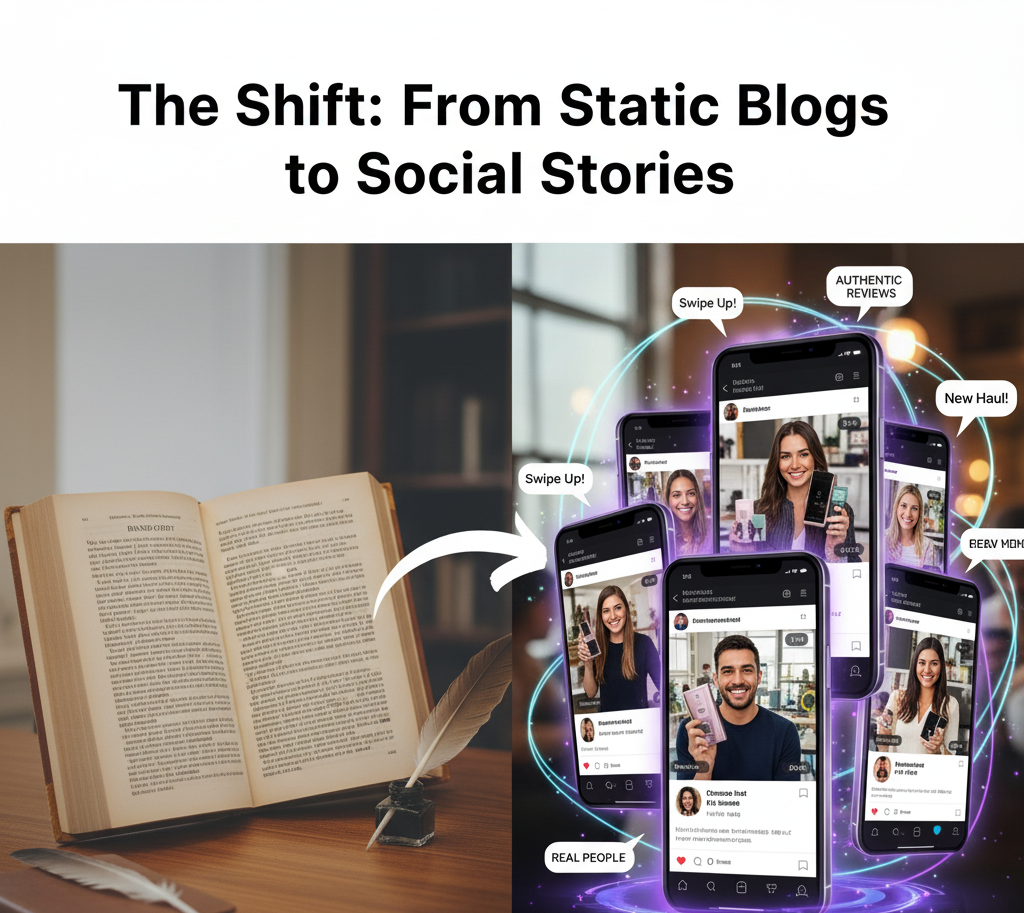Introduction: The New Era of Content Influence
Content marketing has evolved rapidly in the past decade. What started with company-run brand blogs and newsletters has now expanded into social media collaborations, video storytelling, and influencer partnerships. Among these trends, influencer-generated content (IGC) has become a dominant force authentic, engaging, and immediate.
But with influencers capturing attention across Instagram, YouTube, TikTok, and LinkedIn, many marketers are asking a critical question: Is influencer-generated content replacing traditional brand blogs?
The truth lies somewhere in between. While influencers are redefining audience engagement, brand blogs still play an important role in long-term credibility, SEO visibility, and brand authority. The key is not replacement it’s integration.
The Rise of Influencer-Generated Content
In the digital age, authenticity is everything. Consumers are increasingly skeptical of polished advertising and prefer voices they can relate to. That’s where influencers have stepped in.
Influencer-generated content feels personal, unscripted, and trustworthy. Whether it’s a makeup tutorial, a travel vlog, or a LinkedIn post sharing business insights, audiences perceive influencer recommendations as more genuine than corporate messaging.
Brands have recognized this shift. According to recent studies, more than 80% of marketers now use influencer partnerships as part of their content strategy. From global companies to startups, influencer collaborations offer access to ready-made audiences and authentic storytelling that brand blogs sometimes struggle to achieve.
Why Influencer Content Works So Well
The power of influencer-generated content comes from connection and credibility. Influencers aren’t just creators they’re trusted voices within niche communities.
Here’s why their content performs so well:
- Authenticity: Influencers share real experiences, not scripted ads.
- Engagement: Their followers actively comment, share, and discuss.
- Relevance: Influencers tailor content to specific demographics.
- Speed: Trends move fast, and influencers adapt instantly.
While brand blogs focus on evergreen authority, influencer content thrives on real-time relevance tapping into cultural moments, viral trends, and personal storytelling that resonates emotionally.

The Ongoing Role of Traditional Brand Blogs
Despite the hype around influencers, brand blogs still have a crucial place in a company’s marketing strategy. Blogs are the backbone of SEO, driving organic traffic through valuable, keyword-rich content. They also serve as educational resources that build credibility and support conversion.
Unlike influencer posts, brand blogs offer:
- Search visibility: High-ranking articles attract long-term traffic.
- Depth: Blogs provide in-depth analysis, research, and insights.
- Ownership: Companies retain full control over content and messaging.
- Longevity: Blog posts remain accessible long after publication.
Influencer posts may go viral for a day, but blog content sustains visibility for months or years. That long-term value is why many brands still invest heavily in content hubs and thought leadership blogs.
How Influencers and Blogs Complement Each Other
The smartest marketers aren’t choosing between influencers and blogs; they’re using both strategically. The most effective content strategies combine the immediacy of influencer-generated content with the authority of brand blogging.
Here’s how the two can work together:
- Cross-promotion: Use influencer campaigns to drive traffic to brand blogs.
- Repurposing content: Turn blog insights into influencer-friendly social snippets.
- Collaborative storytelling: Invite influencers to guest-post on your brand site.
- SEO synergy: Link influencer content back to brand-owned pages to boost rankings.
This hybrid approach helps brands maintain visibility across both search engines and social platforms maximizing reach and trust simultaneously.
Measuring Success: Data vs. Engagement
One key difference between influencer-generated content and brand blogs lies in how success is measured.
- Brand blogs rely on metrics like page views, organic traffic, dwell time, and conversions.
- Influencer campaigns track engagement likes, shares, comments, and impressions.
Each offers unique insights. Blogs reveal what audiences are searching for; influencers reveal what audiences are talking about.
For brands, the real magic happens when these two data sets intersect, using influencer engagement trends to guide blog topics and using blog analytics to shape influencer collaborations. Together, they create a feedback loop that strengthens overall content performance.
The Trust Factor: Who Do Consumers Believe?
Consumers today value trust over polish. While brand blogs can convey expertise, they sometimes lack the human voice that influencer-generated content provides. People trust people, not companies.
However, trust is fragile. Influencers who over-promote or fail to disclose sponsorships can lose credibility quickly. Meanwhile, brand blogs backed by research, transparency, and authentic storytelling can steadily build trust over time.
The best strategy? Combine influencer relatability with brand credibility. When influencers reference factual content from brand blogs, it creates a layered trust one rooted in authenticity and authority.
What the Future Holds for Digital Content Strategy
As AI, personalization, and social commerce evolve, the future of digital marketing will blur the lines between influencer content and brand blogging. AI tools are already helping brands analyze influencer performance, optimize SEO strategies, and create personalized content for both blogs and social media.
We’ll likely see a rise in co-created content, where influencers and brands collaborate to produce multimedia experiences combining blogs, videos, podcasts, and social posts into unified campaigns.
In this future, it’s not about replacing one format with another. It’s about building ecosystems of content, where each platform reinforces the other to engage audiences across multiple touchpoints.
Conclusion
So, is influencer-generated content replacing traditional brand blogs? Not exactly. It’s redefining how audiences consume and interact with content pushing brands to be more human, conversational, and dynamic.
Blogs remain the foundation for credibility, SEO, and long-form storytelling. Influencer content brings immediacy, emotion, and engagement. When used together, they form a powerful strategy that drives both reach and trust.
As the digital landscape continues to evolve, platforms like Wiraa empower freelancers, content creators, and marketing professionals to collaborate remotely bridging the gap between traditional blogging and influencer-driven storytelling.
The future of content isn’t about choosing between blogs or influencers it’s about integrating both to work smarter, not harder in the age of digital connection.



